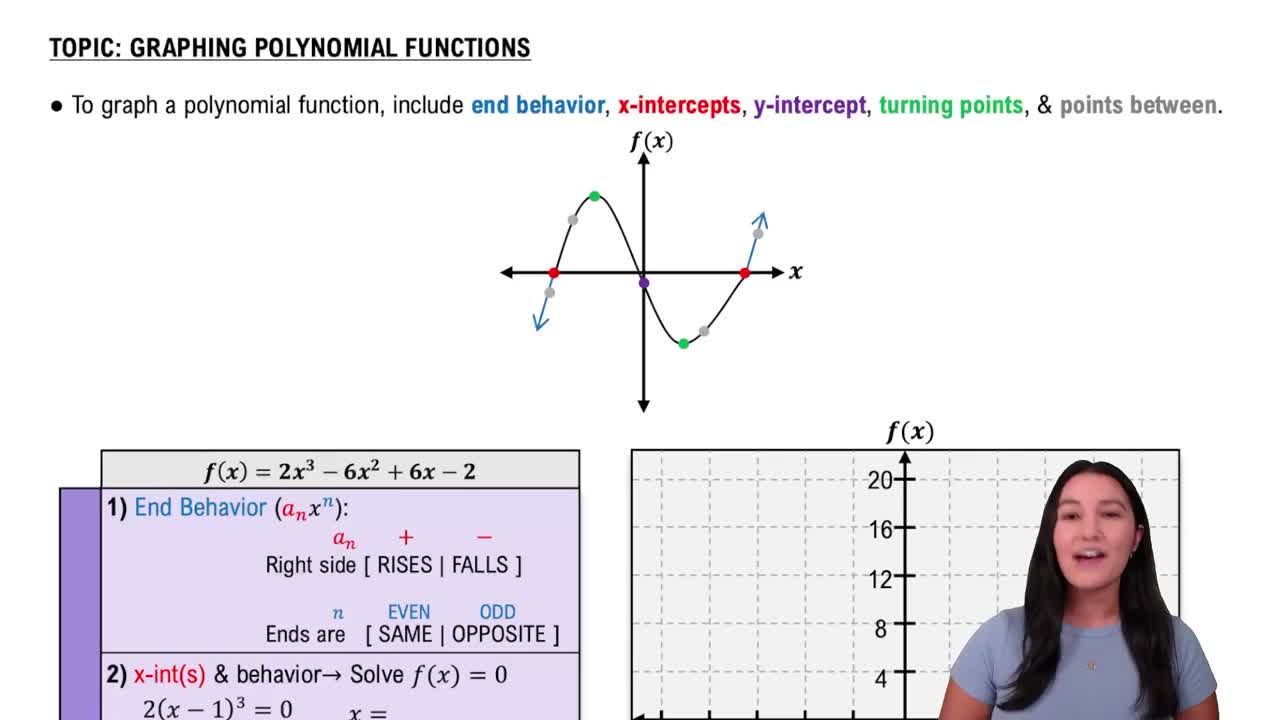Here are the essential concepts you must grasp in order to answer the question correctly.
Polynomial Inequalities
Polynomial inequalities involve expressions where a polynomial is compared to zero using inequality signs (>, <, ≥, ≤). To solve these inequalities, one must determine the intervals where the polynomial is positive or negative. This often requires finding the roots of the polynomial and testing intervals between these roots to see where the inequality holds true.
Recommended video:
Interval Notation
Interval notation is a mathematical notation used to represent a range of values on the real number line. It uses parentheses and brackets to indicate whether endpoints are included (closed intervals) or excluded (open intervals). For example, the interval (a, b) includes all numbers between a and b, but not a and b themselves, while [a, b] includes a and b.
Recommended video:
Graphing Solution Sets
Graphing solution sets on a real number line visually represents the solutions to an inequality. Each interval where the inequality holds true is marked, using open or closed circles to indicate whether endpoints are included. This graphical representation helps in understanding the solution set's behavior and provides a clear visual of the intervals derived from the inequality.
Recommended video:
Graphing Polynomial Functions
 Verified step by step guidance
Verified step by step guidance Verified video answer for a similar problem:
Verified video answer for a similar problem:

